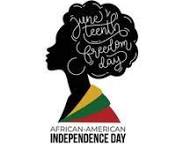Unruly students are on the rise. Students are disrespectful to teachers and parents. The disrespect toward teachers and parents began around 2016. Since then, respect dropped about 30% in schools. A National Center for Education Statistics survey states that schools have increased student fights and classroom disruptions because of behavior conflicts.
Post-COVID brought more cases of disruptions in the classrooms than pre-COVID did. Students show anxiety, learning gaps, and issues in behavior. Schools struggle to find professionals to help students. They lack the staff to meet mental health needs and intervention services for behavior issues.
Unruly Students Need Help
Managing and teaching rude and disruptive students is a challenge. Many teachers face these classroom challenges daily. They diagnose more students with ODD (Oppositional Defiant Disorder). These students do not respond to typical behavior management strategies.
A typical teacher’s reaction is to send students out of the classroom so regular instruction can resume. Thus, the student does not receive instruction and can’t keep up in class. This results in more disruptive behavior. Thus, a cycle begins.
Some strategies decrease negative behaviors. However, the strategies may only decrease the frequency and intensity of bad behaviors. They are not a cure. The strategies must be appropriate and consistent. Adult expectations must be realistic.
- Address the first sign of a problem immediately. Give the student a task that makes the student feel important.
- ODD students love to be at the center of a show. It’s important to correct the student privately.
- In knowing the triggers, make a plan to handle a particular situation. A plan makes it unlikely the misbehavior is personal.
- Make the rules and consequences clear. Constantly review them.
- Stay calm and remember the actions are not personal.
- Try to build a positive relationship through positive remarks. Positive remarks reinforce positive behavior and give students the attention they desire.
- A calming down area or a sensory room visit may lessen the outburst.
- Keep good home-school communication. Contact the home occasionally to report positive behavior in the classroom.
Rudeness in Classroom
Some students misbehave in the classroom and do not have a diagnosis. They are simply disruptive. They are disrespectful; they talk back, use their cell phone, do not listen, make jokes, etc.
This behavior requires a shift in mindset. Most of the time, this type of student is coping with a challenging feeling. This behavior does not reflect personally towards someone. It is a way a student communicates their needs. Only the student knows what is going on in their life. They need empathy for this behavior.
Many rude students may lack social skills. They may lack self-control or do not understand boundaries in what they say. Students without social skills experience difficulties in interpersonal relationships.
Classrooms need boundaries and being consistent is important. Students must understand and accept boundaries and consequences. The classroom must be a safe learning environment.
Students that are rude or have ODD may need professional help. Strategies may only be a bandage. Professionals work with the home and the student. Thus, providing the social skills the student needs most.



